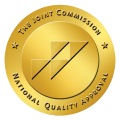Alcohol abuse is interesting in that there are different types of alcohol abuse. For example, a person could suffer from alcoholism, or they could have just one bad night. There also exists the debate of problem drinking vs. social drinking; what’s the difference between the two? How do we differentiate them, and how do we approach each one?
What is Problem Drinking?

Problem drinking aligns more closely with alcohol abuse (hence the term “problem”). Problem drinking, also known as alcohol misuse or alcohol abuse, is defined as the excessive consumption of alcoholic beverages. This type of drinking can lead to serious health problems and can negatively affect not only the drinker’s physical and mental well-being but also their relationships with friends, family and colleagues. In some cases, problem drinking may lead to full-blown alcohol addiction.
The effects of problem drinking tend to be more severe than those of social drinking due to the fact that it involves a higher quantity and level of intoxication. Some common signs and symptoms associated with problem drinking include the following:
- Impaired judgment
- Difficulty controlling one’s impulses
- Legal issues such as DUI arrests
- Financial problems and loss of employment
- Inability to maintain relationships or complete tasks at work or school
- Blackouts and memory loss
- Physical ailments such as liver damage or digestive problems
- Depression
- Anxiety
What is Social Drinking?
Social drinking pertains to times in which an individual drinks in a setting among their friends or family. It is often seen as a way for people to relax and enjoy themselves, while still adhering to the accepted norms of responsible drinking behavior. Social drinking can help foster meaningful relationships and provide an opportunity for individuals to connect with each other on a deeper level. However, it is important to remember that drinking can also be a source of conflict and can lead to dangerous situations if not managed responsibly.
It is important to understand the implications of social drinking so that you can make informed decisions about how and when it should be used. Responsible social drinkers are aware of their own personal limits and respect both the law and the health and safety of others. They also understand the importance of moderation when it comes to drinking alcohol and aim to keep their consumption within safe levels
Can Social Drinking Turn into Problem Drinking?
Social drinking can become problematic for many people, and it is important to recognize the signs of problem drinking. Some indicators of problem drinking include the following:
- Someone is drinking more than they had originally intended
- Social activities are increasingly revolving around alcohol consumption
- Drinking to cope with stress or to fit in
- Drinking alone
- Blacking out
- Strained relationships due to drinking habits
What is Alcoholism?
Alcoholism is a chronic, progressive disease characterized by an uncontrollable craving for alcohol and the inability to limit consumption. It affects millions of people around the world, regardless of socioeconomic status, race, or gender. Alcoholism can lead to serious health problems such as liver damage, heart disease, depression and anxiety, and even death.
People who suffer from alcoholism are more likely to engage in risky behaviors, such as driving while intoxicated and unprotected sex. Additionally, they may experience other problems related to drinking, such as missing work or school due to hangovers or alcohol-related illnesses.
How Many People Suffer from Alcoholism?
Alcoholism has become a major health concern in recent years, affecting millions of individuals and families around the world. According to the National Institute on Alcohol Abuse and Alcoholism (NIAAA), an estimated 16 million adults in the United States have an alcohol use disorder (AUD). This means that nearly one out of every eight Americans above the age of 18 is suffering from AUD. Of those 16 million, only about 8% of them receive treatment for their alcohol use disorder. The NIAAA also estimates that more than 88,000 people in the US die every year due to alcohol-related causes.
Worldwide, it is estimated that more than 3 million deaths each year are attributed to alcohol use. This includes both acute and chronic effects of the overuse of alcohol, such as liver disease, cancer, mental health issues, car accidents and falls. Alcohol misuse is also associated with higher rates of domestic violence and crime, further complicating its impact on society.
What are the Signs of Alcoholism?
The signs of alcoholism include the following:
- Increased tolerance to alcohol
- Inability to control drinking
- Physical dependence on alcohol
- Issues related to work or family life due to drinking
- Blacking out after drinking
- Social isolation
- Avoiding activities that don’t involve alcohol
- Experiencing withdrawal symptoms when not drinking
Is Alcoholism Preventable?
Alcoholism is a preventable condition, yet it remains prevalent in many societies. While genetics and environment can play a role in the development of an alcohol use disorder (AUD), individuals can take steps to reduce their risk of developing alcoholism.
One important step people can take to reduce their risk of becoming an alcoholic is to practice moderation when consuming alcohol. Limiting your intake to no more than 1-2 drinks a day for men and no more than 1 drink a day for women is an effective way to reduce the risk of developing alcoholism over time. Additionally, avoiding binge drinking behavior can also help individuals avoid developing an AUD.
In addition to practicing moderation when it comes to drinking, individuals should also limit the situations in which they consume alcohol. For instance, avoiding large gatherings and events where there is excessive drinking can help people stay in control of their alcohol consumption and avoid putting themselves into a situation where it could be difficult for them to make healthy decisions about how much to drink.
Is Alcoholism Genetic?
Alcoholism is a complex disorder that may be influenced by genetic, psychological, and environmental factors. Studies have shown that genetics can play an important role in the risk of developing alcohol use disorders.
Genetic predisposition to AUDs is thought to be due to variations within several genes involved in neurotransmission and reward pathways. Some of these genes are associated with a range of mental health disorders, including substance abuse. People who have a family history of alcohol addiction may be more likely to develop an AUD than those without this family history.
In addition to genetic influences, environmental factors can also contribute to the development of AUDs. These include social and cultural influences, traumatic or stressful life events, and early exposure to alcohol. People who have been exposed to a positive attitude towards alcohol use at an early age may be more likely to develop an AUD than those without this experience. Other risk factors include mental health conditions such as depression and anxiety, peer pressure, easy access to alcohol, and a lack of parental involvement or monitoring.
Is it Possible for an Alcoholic to Transition to a Social Drinker?
It is possible for an alcoholic to become a social drinker, but it requires hard work and dedication. Many alcoholics have successfully managed to reduce their drinking enough to become moderate, responsible drinkers. The process of changing from an alcoholic to a social drinker involves identifying the underlying causes of alcoholism and making changes in lifestyle, thoughts, and behaviors.
The first step is recognizing that alcoholism has a negative impact on the individual and their loved ones. When an alcoholic admits they have a problem, it is important to seek professional help. Many treatment options are available and can include therapy, support groups such as Alcoholics Anonymous, or residential rehabilitation programs. These programs will provide guidance in developing coping skills and strategies to reduce cravings, such as avoiding high-risk situations and focusing on developing positive habits and activities.
Key Indicators of a Problem Drinker

Problem drinking can have many adverse effects on an individual’s physical, mental and social well being. The following are some key indicators of problem drinking:
- Increased alcohol tolerance – Problem drinkers often need more and more alcohol to achieve the desired effect. As they drink more their body becomes increasingly tolerant and requires larger amounts of alcohol to feel the same “buzz.”
- Loss of control – Problem drinkers may find it difficult to stop drinking once they have started, often consuming far more than they had initially planned. They also lack control over when and where they drink, despite knowing the potentially negative consequences.
- Neglecting responsibilities – Problem drinkers are often more focused on drinking than their responsibilities. They may neglect family, work, financial obligations and school in favor of consuming alcohol.
- Memory Loss – Heavy drinking can cause blackouts or moments where the drinker cannot remember what happened while they were intoxicated. This can be a sign of problem drinking as it often implies that large amounts of alcohol were consumed.
- Risky behavior – Problem drinkers may take part in risky activities while under the influence, such as drinking and driving or engaging in unprotected sexual activity. This type of behavior can have serious and long-lasting consequences.
Treatment Options for Alcoholism
There are many treatment options for alcoholism available. There are plenty of resources to help you detox from alcohol safely. Some of these include the following:
- Inpatient residential treatment
- Outpatient treatment
- Medically assisted detox
Get the Help You Need at Magnolia City Detox
Whether you don’t know if you’re a social drinker or a problem drinker, Magnolia City is here for you. If you or a loved one would like to find out more about the comprehensive treatment we offer, you can contact us here.

















